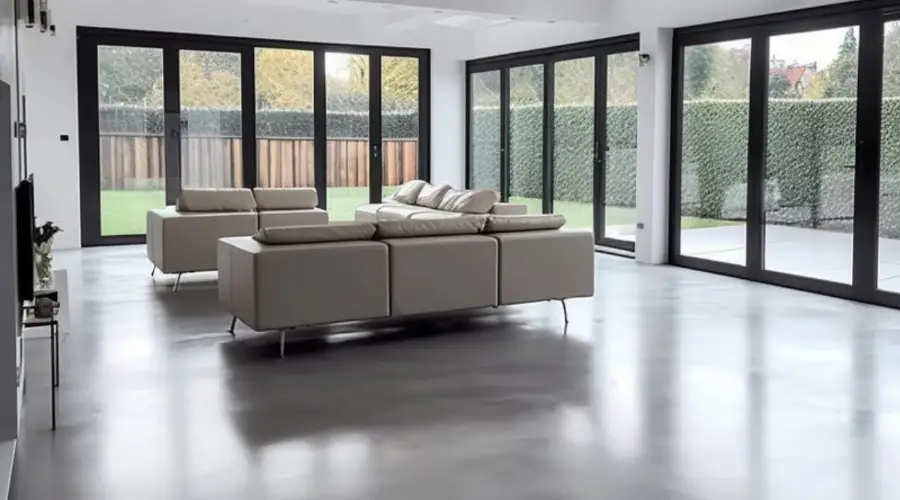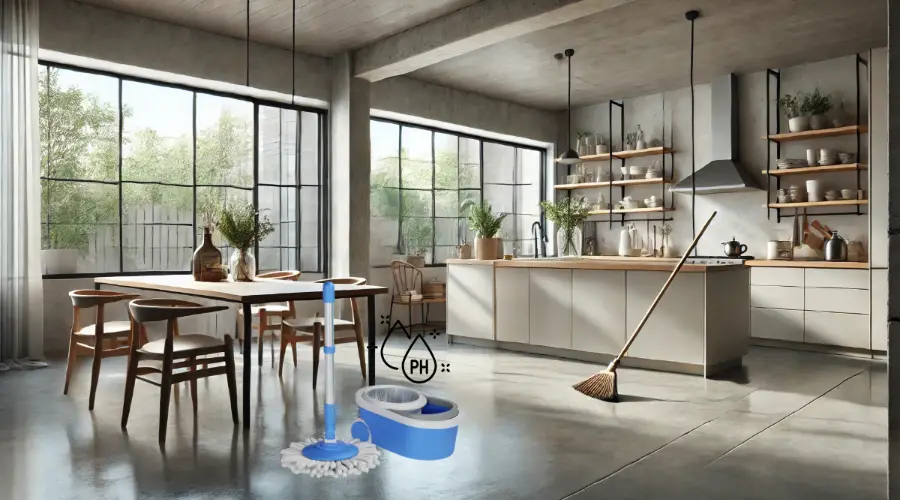Having the most effective type of flooring that satisfies both aesthetic and structural needs is vital to any construction. Although there are numerous options available today, microcement flooring is one of the most popular continuous flooring techniques. It provides visually pleasing finishes to indoor and outdoor spaces and is suitable for all types of buildings. Here we look at microcement flooring, its types, applications, pros and cons and everything you need to know about it.
Overview of Microcement Flooring
Microcement flooring or micro-screed is a decorative cement coating used to renovate living areas & workspaces. It includes applying a thin, polymer-modified cement layer on an elastic mortar base in a 2 to 3-mm thin layer. It is a permanent flooring type that provides aesthetic finishes to any space and has numerous other advantages.
Types of Microcement Surface Finishes
- Polished Finish- It provides a smooth and glossy surface after the microcement is set to give a sleek & contemporary look. Apart from flooring, this finish is a good fit for wall cladding.
- Aged & Polished Finish- This is similar to a polished finish. However, the surface looks rustic & aged with the use of chemical treatment before polishing.
- Tinted Finish- This gives a unique colour to the flooring, making every space colourful. This finish is achieved by adding microcement with colouring pigments.
- Glossy Finish- It provides a shiny & robust surface ideal for floors, walls and ceilings. Microcement flooring with a glossy finish is easy to clean and maintain; however, the glossy look can often overshadow the natural colours and textures of the flooring.
- Matt Finish- It is characterised by a polished yet understated look, giving a sophisticated touch and an excellent choice for modern home & office spaces.
- Satin Finish- It provides a soft look and feel and is an alternative to waxed or glossy finishes. They have many applications and are used on floors, walls, and countertops for residential and commercial buildings.
- Non-slip Matt Finish- It retains the matt aesthetic looks and ensures the floor is non-slippery. Using the anti-slip polyurethane sealant is crucial to achieving this finish.
Applications of Microcement Flooring

- This flooring is suitable for both external and interior flooring of any room.
- The water-resistant, non-slippery and stain-resistant nature makes it ideal for bathrooms, kitchens and spaces around swimming pools.
- The variety of colour options and durability make it ideal for home spaces, giving it an aesthetic appeal.
- Due to high traffic resistance, they can be used for commercial and industrial structures.
Advantages of Microcement Flooring
- Microcement flooring has a thickness of 2 to 3mm and adds a thin layer of finishing to the floors without raising the floor level.
- It is a continuous flooring that requires no joints or expansion joints, and the entire floor finish is a single piece.
- It adheres to all types of materials without requiring removal of the existing substrate, minimising debris and breakage.
- This flooring is durable and long-lasting and is highly suitable for high-traffic areas.
- This flooring is resistant to UV rays, keeping the micro cement resilient and new.
- Microcement flooring requires minimal maintenance, as occasional sweeping & mopping is sufficient & doesn’t require frequent polishing or waxing.
- This flooring has exceptional resistance against abrasion, traffic and cleaning products and retains its new look for a long time.
- Microcement flooring is available in different colours and finishes that give a unique look to the room spaces.
- Due to its durability, this can be used for exterior flooring on terraces, pool crowns and edges.
How to Make a Microcement Floor?
- The floor should be cleaned and levelled, and the cracks and holes in the floor should be filled and fixed.
- A primer should be applied on the surface to provide proper adhesion for the microcement.
- After applying the primer, the microcement is applied in thin layers of 2 to 3mm thickness using a trowel or a spray gun.
- Once the microcement is dried, a sealant is applied to protect the surface from scratches & stains.
Care & Maintenance of Microcement Flooring

Microcement flooring is easy to maintain. Regular sweeping and periodical mopping with pH-neutral cleaners are sufficient to keep the floor clean and free from stains. Since this flooring is waterproof, there is minimal chance of water damage and stains, making it suitable for kitchen spaces.
During the initial stage, after applying the microcement flooring, the room should be properly ventilated for better drying. Avoid stepping on the flooring for the first week after applying. This flooring doesn’t necessarily need wax; however, applying wax periodically could improve resistance against damage. Avoid high impact on the flooring, such as dropping heavy objects or dragging furniture across the floor.
Conclusion
Microcement flooring blends thin decorative and structural elements, providing numerous benefits in construction and interior design. It is highly resistant to water, stain, impact, UV rays and almost all kinds of things generally acting over surfaces. It is a permanent solution for any damage caused to the floor levels and requires low maintenance. It is available in numerous types based on the building requirements and is easy to apply. All these make it an ideal and most preferred flooring material in modern construction.

